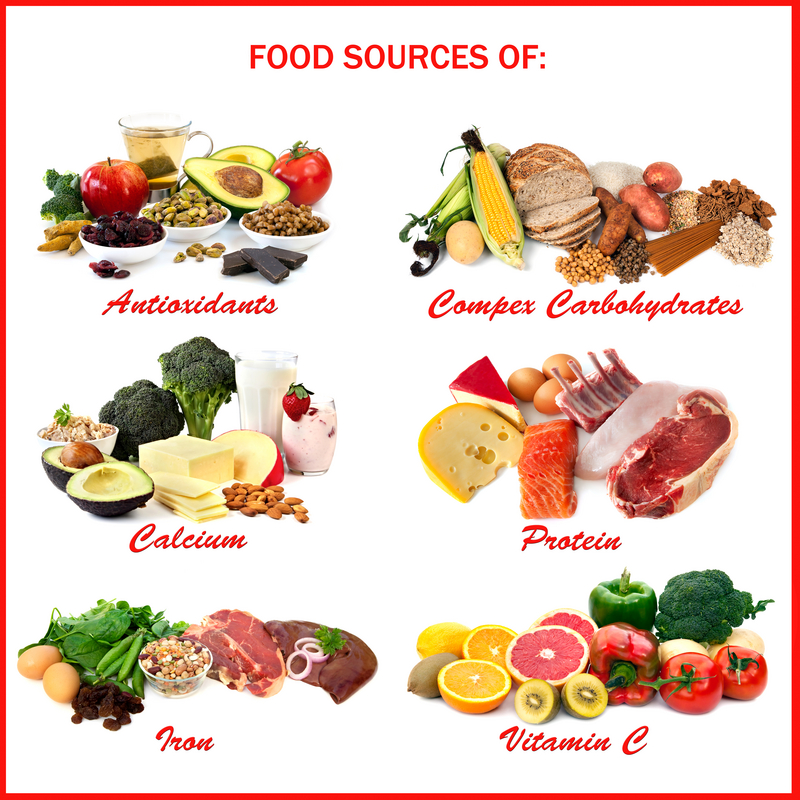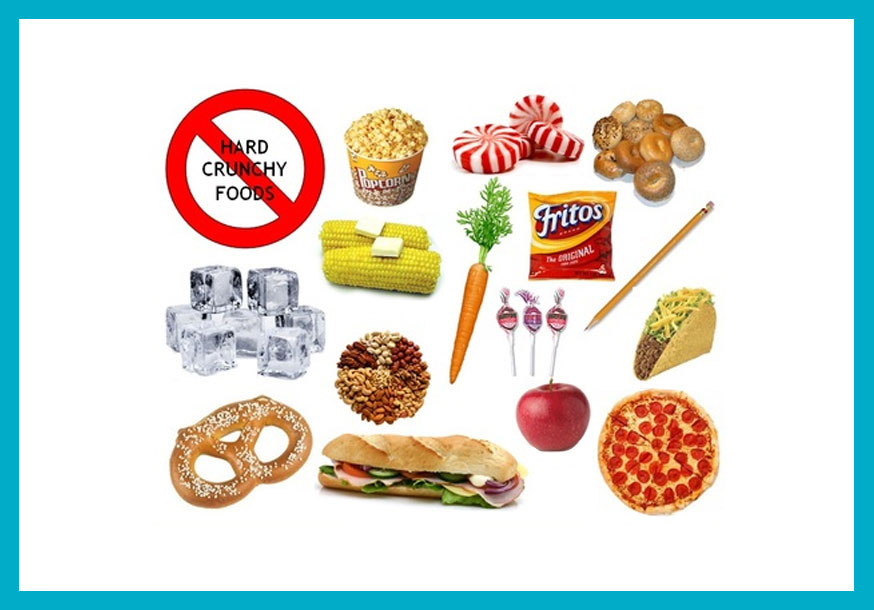
There are many delicious health foods that are nutritious and tasty. Including them in your diet will provide you with colorful, nutrient-rich meals that taste great. Among these foods are fruits, vegetables, nuts, seeds, and legumes. They are delicious and require no preparation. Apples are an excellent choice, as they're rich in fiber and vitamin C. They're also easy to find in grocery stores and can easily be added as a flavoring to smoothies.
Prunes are a great source of nutrition and can help you maintain your digestive health. They are high in fiber and antioxidants which make them great for the body. A quarter cup of prunes contains 104 calories and 12% fibre. You can add them in your smoothies, cereals, and baked goods. They're also delicious added to sauces and hummus. They are a great snack to add to your diet. Moreover, they're very tasty and can be easily procured.
You can also choose from a wide range of starchy vegetables. These include sweet potatoes, carrots, squashes, pumpkins, corn and squash. These are great sources of fiber and energy. They also contain significant amounts of B- and zinc. They are very good for your body as they are rich in iron, calcium and B vitamins. If you make them at-home, ensure that you compare their nutritional content with other brands.

Grilled fish is also an option, as well as salads. Some of the best types of fish to eat are salmon, trout, mackerel, herring, sardines, tuna, and mackerel. They're rich in omega-3s, which are vital for signaling and cell membrane fluidity. They are also known to reduce the risk from heart disease, diabetes, and cancer.
You can also eat legumes in addition to fruits and vegetables. They are rich in protein and dietary fiber. These foods will keep your stomach fuller longer, and you won't snack between meals. These foods are a great alternative to meat because they provide the same amount of protein and no added fat. If you want to avoid dairy and meat, you can choose calcium-enriched alternatives, which contain 100 milligrams of calcium per 100 ml.
Choosing the right types of food is important. It is essential to eat fruits and veggies for good health. They are high in vitamins, nutrients, and fiber. It's important to choose the right kinds of fruit and vegetables to eat everyday. You should eat them as much as possible, because they are good for you. The best way is to eat them all.
Another healthy food is yogurt. It has high amounts of protein and is a great breakfast option. It's also rich in vitamins, minerals. It's also a good source of soluble fiber, which is found in fruits, vegetables, and whole grains. To make foods more interesting, you should mix them. Some prefer tea while others prefer coffee. While they may not be as popular as their counterparts, coffee has several health benefits, including improving energy levels and decreasing the risk of type 2 diabetes.

Beans are a good alternative to vegetables and fruits. Beans are low on fat and high-protein. They are also a good source for fiber, magnesium, potassium and other nutrients. They also contain plant-based protein. In addition, they're inexpensive. They can be used in salads and as side dishes in cooking. It is important to note that not enough people eat beans.
Beans and seeds are among the most important foods to eat everyday. They contain phytonutrients, fiber, and B vitamins. They are also very affordable. They can even help you lose weight and maintain a healthy weight. You will have a wider variety of healthy foods available to you every day. It is best to eat smaller portions if you can afford it. They are delicious, filling, and easy to make.
FAQ
Do I need calories to count?
You might wonder, "What's the best diet for me?" or "is counting calories necessary?" The answer to this question depends on many factors, including your current health, your personal goals and preferences, as well as your overall lifestyle.
The Best Diet For Me: Which One Is Right?
The best diet for me depends on my current health status, my personal goals, my preferences, and my overall lifestyle. There are many diets available, some good and others not so good. Some diets work for some people, while others are not. What should I do then? How can I make the right choice?
These are the main questions addressed by this article. This article begins with a brief overview of the various types of diets that are available today. After that, you will learn about the pros and disadvantages of each type. Then, we will discuss which diet is the best.
Let's look at some of the main types of diets to get started.
Diet Types
There are three main types, low fat, high protein, or ketogenic diets. Let's take a look at them all below.
Low Fat Diets
A low-fat diet reduces the amount of fats you eat. This is accomplished by decreasing the intake of saturated fats such as butter and cream cheese. You can replace them with unsaturated oils (olive oil and avocados) For those looking to lose weight quickly, a low-fat diet is often recommended. This kind of diet could cause problems like constipation or heartburn and indigestion. Vitamin deficiencies can also occur if the person doesn't get enough vitamins through their diet.
High Protein Diets
High protein diets restrict carbohydrates in favor of proteins. These diets have higher protein levels than other diets. They are meant to help build muscle mass and burn more calories. Unfortunately, they can't provide adequate nutrition for those who eat regularly. They are not suitable for all people because they can be restrictive.
Ketogenic Diets
Ketogenic diets can also be known as keto diets. They are high fat and moderately carbohydrate and protein-rich. They are typically used by athletes and bodybuilders because they allow them to train harder and longer without getting tired. You must adhere to all side effects, including fatigue, headaches, nausea and headaches.
Why is it important to live a healthy life?
Having a healthy lifestyle helps us live longer, happier lives. A healthy diet, regular exercise and good sleep habits will prevent the development of diseases such as heart disease, stroke, cancer, diabetes, and Alzheimer's.
A healthy lifestyle can also help improve mental health and make it easier to deal with daily stressors. A healthy lifestyle will help us feel more confident and younger.
What causes weight loss as we age?
How do you know if your bodyweight changes?
If there are less calories than muscle mass, then weight loss is possible. This means that daily energy needs must be greater than the calories consumed. A decreased level of activity is the main cause of weight loss. Other reasons include poor eating habits, stress, hormone imbalances, certain medications and illness. A person who has more fat than their muscle mass will experience weight gain. It occurs when people consume more calories per day than they need. The most common causes are overeating, increased activity, hormonal changes, and excessive calories.
The primary reason we lose weight is that we consume less calories than what we burn. When we exercise regularly, we increase our metabolism rate which burns off more calories throughout the day. But this doesn't guarantee that we'll lose weight. All that matters is whether we're losing weight or gaining muscles. Weight loss is possible if you burn more calories than you consume. But if we're consuming more calories than we're burning, then we're actually storing them as fat.
As we get older, our movement speed slows down and so we move less. We also tend to consume less food than when we were younger. Therefore, we tend to put on weight. On the other hand, we have more muscle mass and look larger than we actually are.
Without weighing yourself each week, there is no way to know how much weight you have lost. There are many methods to measure your weight. You can gauge your waist size, hips, hips, thighs and arms. Some people prefer using bathroom scales and others prefer tape measure.
Track your progress by measuring your waistline and weighing yourself every week. To see how far you have come, you can take photos of yourself every few month.
You can also check your height online to find out how many pounds you have. You'd likely weigh 180 pounds if you were 5'10 tall and 180 pounds if you were 180lbs.
What is the difference between a calorie or a kilocalorie.
Calories refer to units that are used for measuring the energy in food. Calories are the unit of measurement. One calorie contains the energy needed to raise the temperature of one gram of water by one degree Celsius.
Kilocalories are another way to describe calories. Kilocalories are expressed in thousandths (or a calorie). 1000 calories are equal to one kilocalorie.
How to measure body fat?
A Body Fat Analyzer (BFA) is the best method to measure bodyfat. These devices measure the body fat percentage in people who wish to lose weight.
Statistics
- WHO recommends reducing saturated fats to less than 10% of total energy intake; reducing trans-fats to less than 1% of total energy intake; and replacing both saturated fats and trans-fats to unsaturated fats. (who.int)
- This article received 11 testimonials and 86% of readers who voted found it helpful, earning it our reader-approved status. (wikihow.com)
- nutrients.[17]X Research sourceWhole grains to try include: 100% whole wheat pasta and bread, brown rice, whole grain oats, farro, millet, quinoa, and barley. (wikihow.com)
- According to the 2020 Dietary Guidelines for Americans, a balanced diet high in fruits and vegetables, lean protein, low-fat dairy and whole grains is needed for optimal energy. (mayoclinichealthsystem.org)
External Links
How To
What does "vitamin" actually mean?
Vitamins can be described as organic compounds found in food. Vitamins aid us in absorbing nutrients from the food we eat. Vitamins cannot be made by the body; they must be taken from food.
There are two types vitamins: water soluble or fat soluble. Water-soluble vitamins dissolve quickly in water. Vitamin C,B1(thiamine), B2 (2riboflavin), and B3 (3niacin), as well as vitamin C,B1, B2 (riboflavin), and B3 (niacin), vitamin B6 (pyridoxine), vitamin folic acid (biotin), pantothenic, and choline are examples. Fat soluble vitamins are stored in the liver and fatty tissue. Vitamin D, E, K and A are some examples.
Vitamins are classified according their biological activity. There are eight major categories of vitamins.
-
A - Vital for normal growth and maintaining good health.
-
C - vital for proper nerve function, and energy production.
-
D - Vital for healthy bones and teeth
-
E is needed for good reproduction and vision.
-
K - essential for healthy muscles, nerves, and bones.
-
P - vital for building strong bones andteeth.
-
Q - Aids digestion and iron absorption
-
R - necessary for making red blood cells.
The recommended daily allowance (RDA), for vitamins, varies depending upon age, gender, or physical condition. The U.S. Food and Drug Administration sets RDA values.
For adults over 19, the RDA for vitaminA is 400 micrograms per daily. Because it is essential for the development of the fetus, pregnant women should consume 600 micrograms per daily. Children ages 1-8 require 900 micrograms per day. For infants younger than one year, 700 micrograms are required daily. However, this number drops to 500 micrograms each day for children aged 9-12 months.
Children aged 1-18 years need 800 micrograms daily, while children overweight require 1000 micrograms per days. Children who are severely obese or underweight will need 1200 micrograms each day.
Children ages 4-8 years who have been diagnosed with anemia need 2200 micrograms per day of vitamin C.
Adults over 50 years of age need 2000 micrograms per day for general health. Mothers who are pregnant, nursing, or have a high nutrient need will require 3000 micrograms a day.
Adults over 70 need 1500 micrograms daily, as they lose 10% of their muscle every ten years.
Women who are pregnant or nursing need more than the RDA. Pregnant mothers need 4000 micrograms per daily during pregnancy and 2500 after giving birth. Breastfeeding mothers need 5000 micrograms per day when breast milk is being produced.